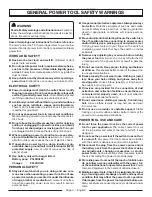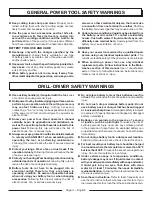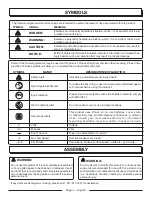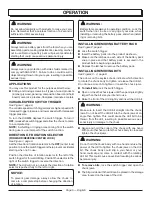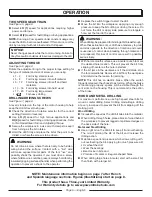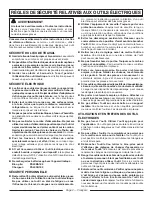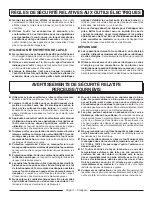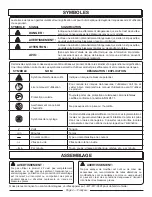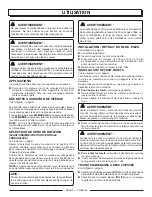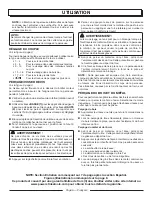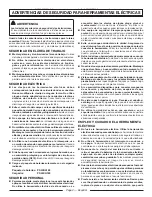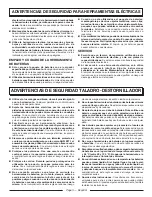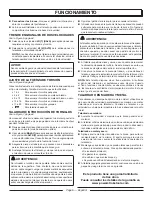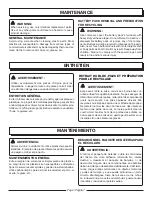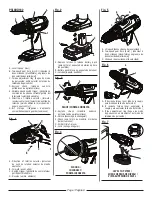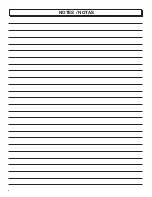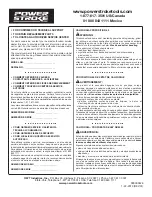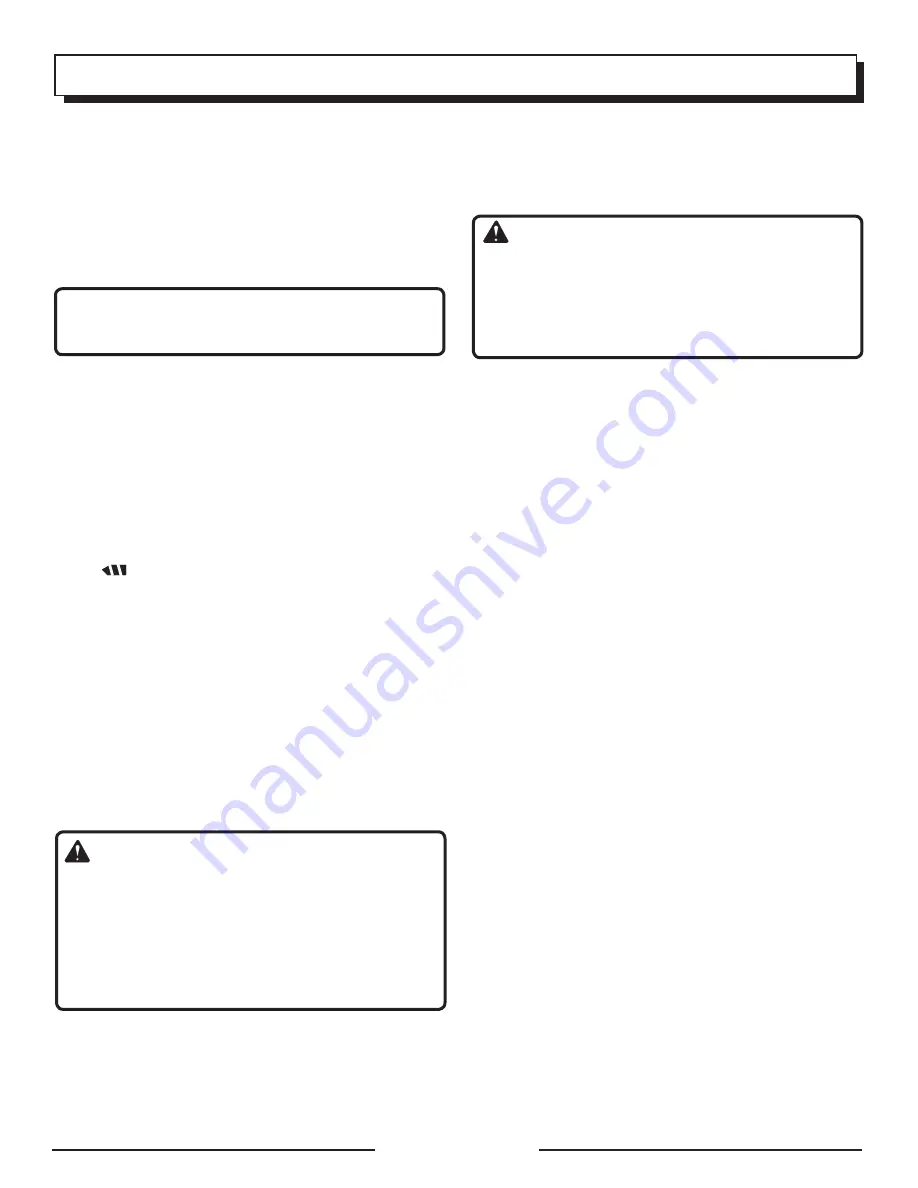
Page 6 — English
oPerAtioN
Note: maintenance information begins on page 7 after French
and spanish language sections. Figures (illustrations) start on page 8.
this product has a three-year Limited warranty.
For warranty details go to www.powerstroketools.com
two sPeeD GeAr trAiN
See Figure 5, page 8.
Select
Lo (1)
speed for applications requiring higher
power and torque.
Select
Hi (2)
speed for fast drilling or driving applications.
Note:
Running at low speeds under constant usage may
cause the drill to become overheated. If this occurs, cool the
drill by running it without a load and at full speed.
NOTICE:
Never change speeds while the tool is running. Failure to
obey this caution could result in serious damage to the drill.
ADjustiNG torQue
See Figure 6, page 8.
Rotate the adjustment ring to the proper torque setting for
the type of material and size of screw you are using.
• 1 - 4
For driving small screws
• 5 - 8
For driving screws into soft material
• 9 - 12
For driving screws into soft and hard
materials
• 13 - 16 For driving screws into hard wood
• 17 - 23 For driving large screws
•
For heavy drilling
DriLLiNG/DriviNG sCrews
See Figure 7, page 8.
A level is located on the top of the motor housing to help
keep the drill bit level during use.
Check the direction of rotation selector for the correct
setting (forward or reverse).
Use
Lo (1)
speed for high torque applications and
Hi (2)
speed for fast drilling or driving applications. Refer
to
Two Speed Gear Train
and
Adjusting Torque
.
Secure the workpiece in a vise or with clamps to keep it
from turning as the bit rotates.
Hold the drill firmly and place the bit at the point to be
drilled, or where the screw is to be driven.
wArNiNG
:
Do not drive a screw where there is likely to be hidden
wiring behind the surface. Contact with a “live” wire
will make exposed metal parts of the tool “live” and
possibly shock the operator. If you must drive a screw
where hidden wire could be present, always hold tool by
insulated gripping surfaces (handle) when performing the
operation to prevent a shock to the operator.
Depress the switch trigger to start the drill.
Move the bit into the workpiece, applying only enough
pressure to keep the bit cutting or driving the screw. Do
not force the drill or apply side pressure to elongate a
hole. Let the tool do the work.
wArNiNG
:
When drilling, be prepared for binding at bit breakthrough.
When these situations occur, drill has a tendency to grab
and kick opposite to the direction of rotation and could
cause loss of control when breaking through material. If
not prepared, this loss of control can result in possible
serious injury.
With hard, smooth surfaces, use a center punch to mark
the desired hole location. This will prevent the bit from
slipping off-center as the hole is started.
If the bit jams in the workpiece or if the drill stalls, stop
the tool immediately. Remove the bit from the workpiece
and determine the reason for jamming.
Note:
This drill has an electric brake. When the switch
trigger is released, the chuck stops turning. When the brake
is functioning properly, sparks will be visible through the
vent slots on the housing. This is normal and is the action
of the brake.
WOOD AND METAL DRILLING
For maximum performance, use high speed steel bits for
wood or metal drilling. Select drilling mode. Begin drilling
at a very low speed to prevent the bit from slipping off the
starting point.
wood Drilling
Increase the speed as the drill bit bites into the material.
When drilling through holes, place a block of wood behind
the workpiece to prevent ragged or splintered edges on
the back side of the hole.
metal and steel Drilling
Use a light oil on the drill bit to keep it from overheating.
The oil will prolong the life of the bit and increase the
drilling action.
Maintain a speed and pressure which allows cutting with-
out overheating the bit. Applying too much pressure will:
• Overheat the drill;
• Wear the bearings;
• Bend or burn bits; and
• Produce off-center or irregular-shaped holes.
When drilling large holes in metal, start with a small bit,
then finish with a larger bit.
Summary of Contents for PSL0DD182
Page 19: ...Page Página 9 NOTES NOTAS ...


